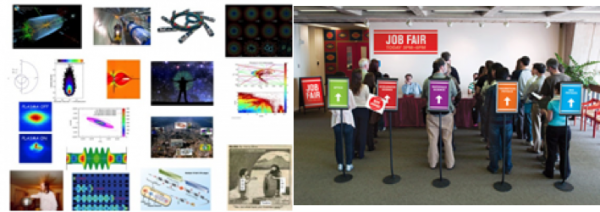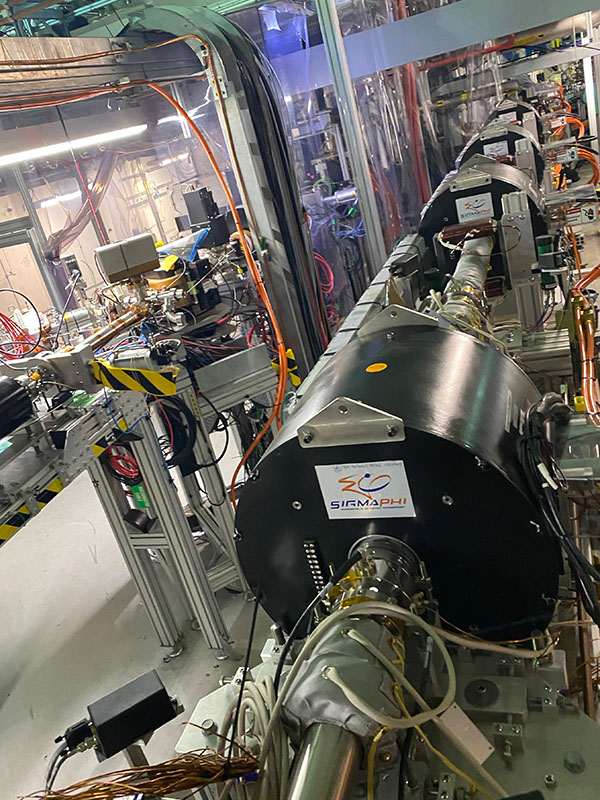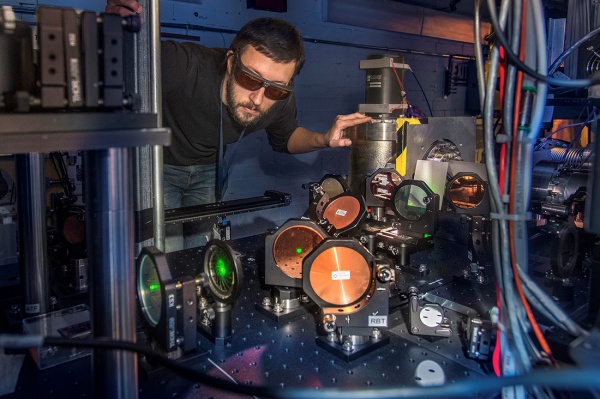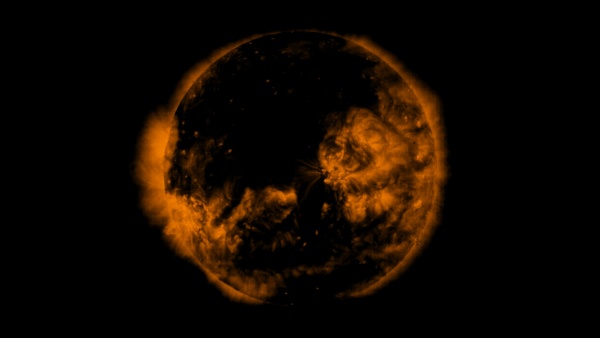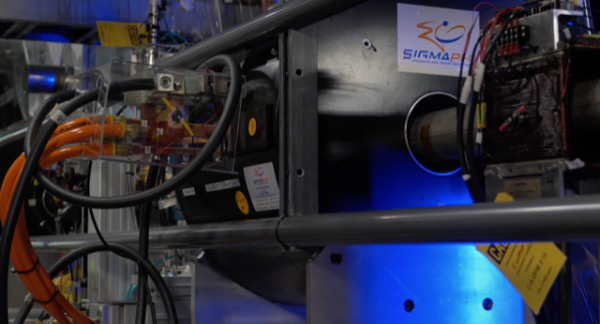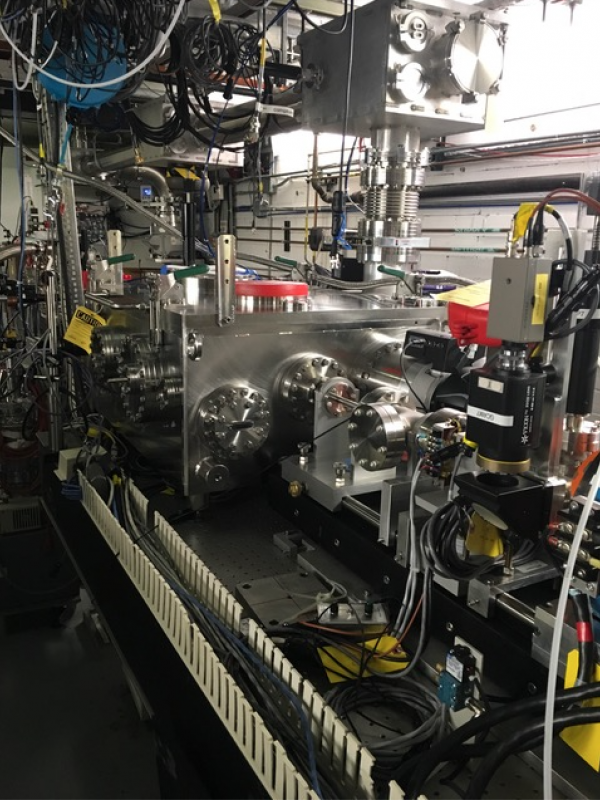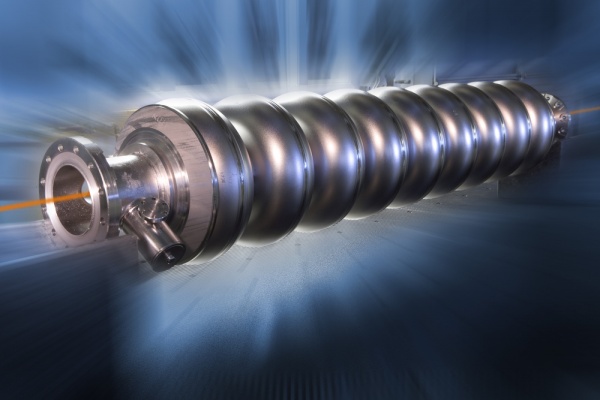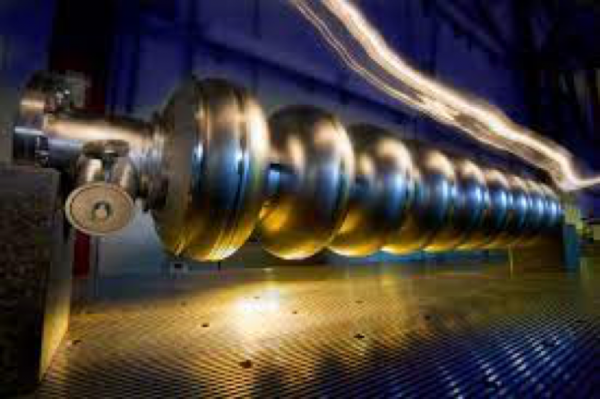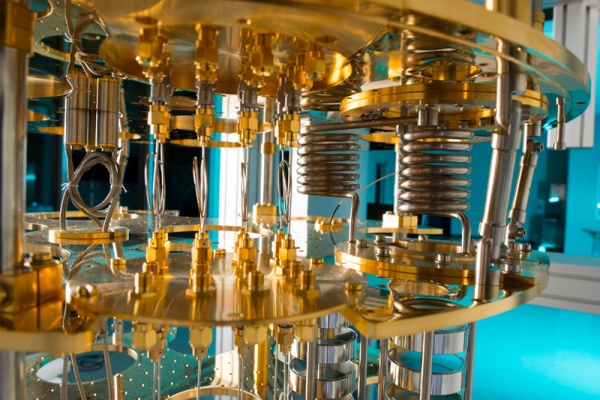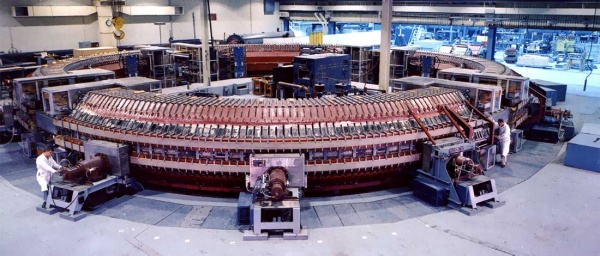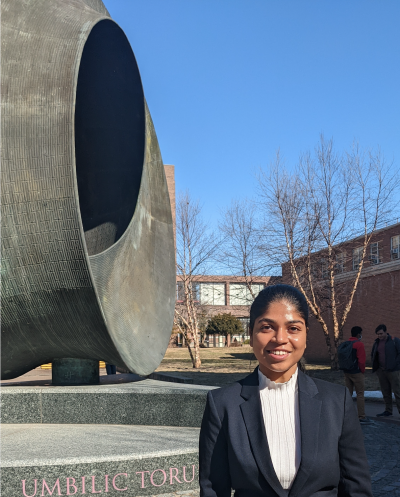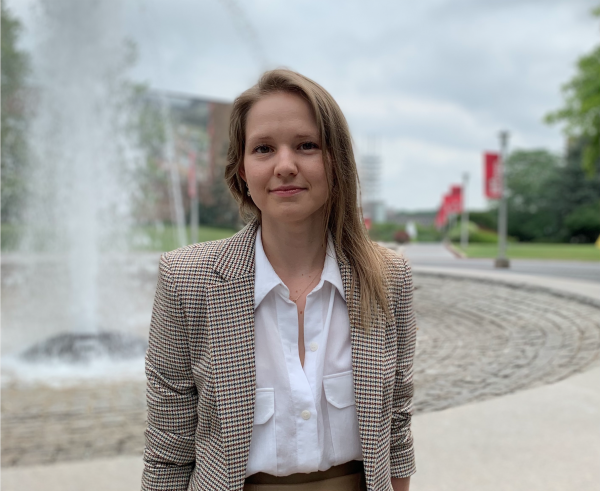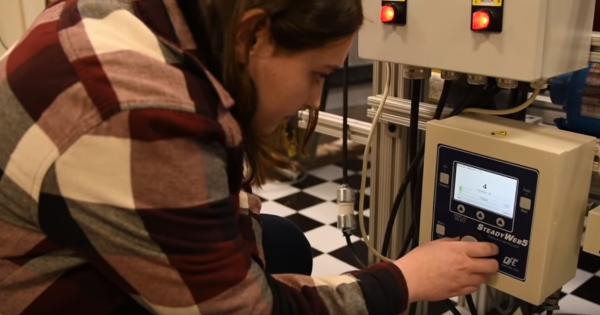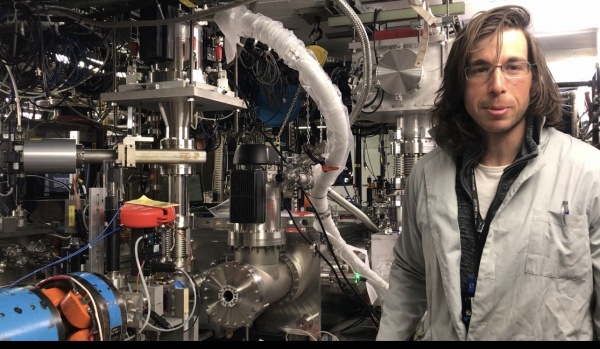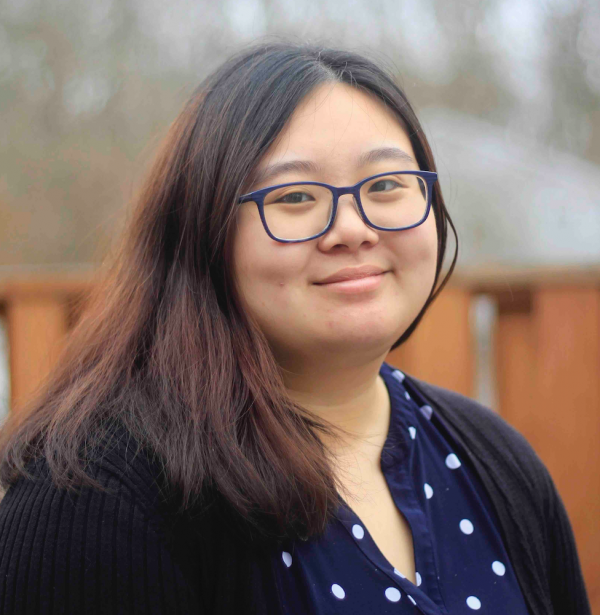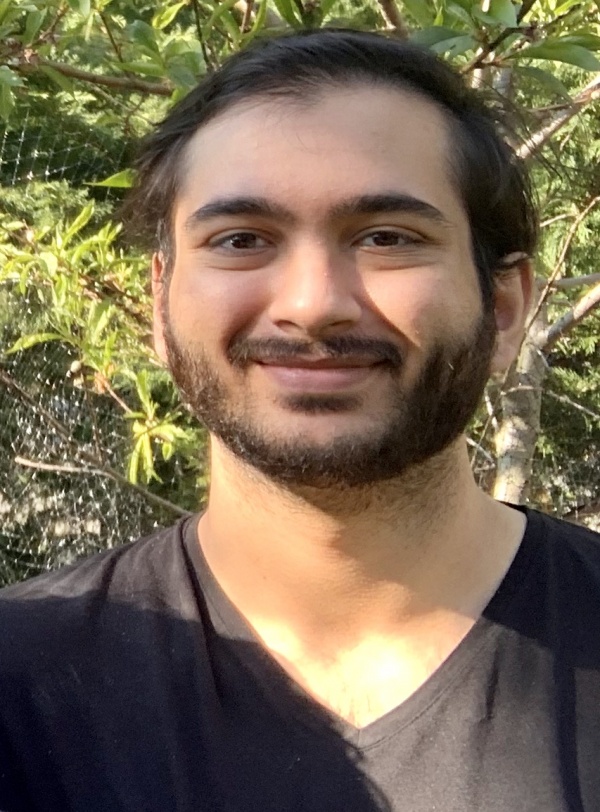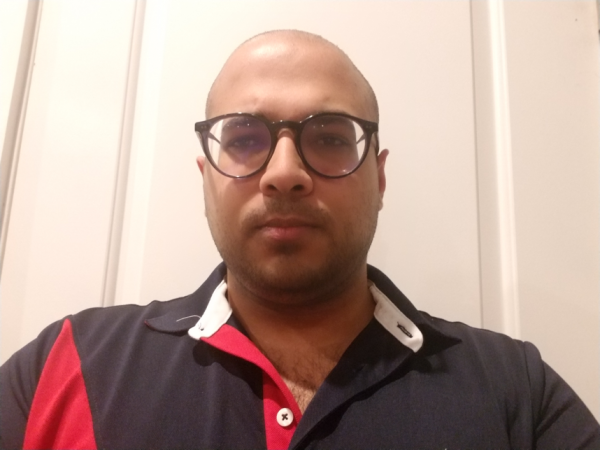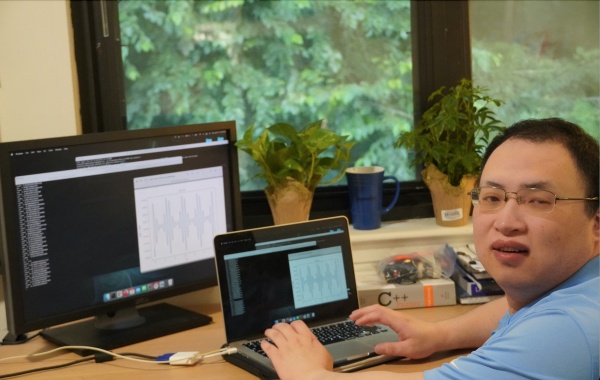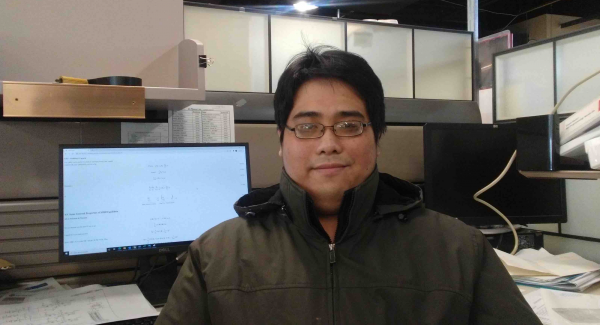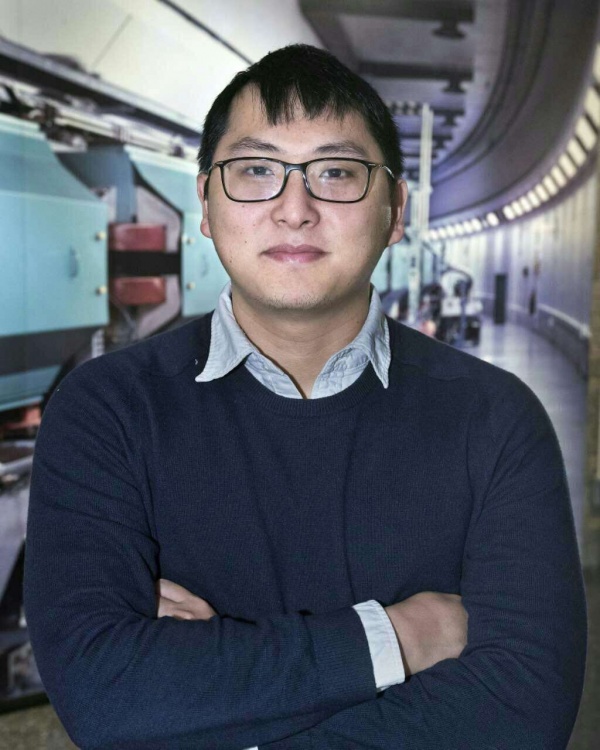Difference between revisions of "Ernest courant traineeship main"
YichaoJing (Talk | contribs) |
YichaoJing (Talk | contribs) (→The Future: Space Weather and Accelerator Training) |
||
| (38 intermediate revisions by the same user not shown) | |||
| Line 12: | Line 12: | ||
== '''Developing the Next Generation of Particle Accelerator Talent''' == | == '''Developing the Next Generation of Particle Accelerator Talent''' == | ||
| + | |||
| + | [[Image:rhic-electron-cooler.jpg|600px|Image: 1200 pixels|center]] | ||
Stony Brook University, in collaboration with Brookhaven National Laboratory (BNL), Cornell University and FERMI National Accelerator Laboratory, has established the Ernest Courant Traineeship in Accelerator Science & Engineering. The program is supported by a $2.9 million, five-year grant from the High Energy Office of the U.S. Department of Energy (DOE). | Stony Brook University, in collaboration with Brookhaven National Laboratory (BNL), Cornell University and FERMI National Accelerator Laboratory, has established the Ernest Courant Traineeship in Accelerator Science & Engineering. The program is supported by a $2.9 million, five-year grant from the High Energy Office of the U.S. Department of Energy (DOE). | ||
[[Next_generation_talent|'''Read more''']] | [[Next_generation_talent|'''Read more''']] | ||
| + | |||
| + | == '''Fundamentals of Accelerators Course – Learning by Doing''' == | ||
| + | |||
| + | [[Image:atf1.jpg|600px|Image: 1200 pixels|center]] | ||
| + | |||
| + | Fundamentals of Accelerator Physics and Technology is the second in a two course series at Stony Brook University on accelerator science and technology. The purpose of this course is to introduce the fundamentals of beam physics via experimental investigation and beam dynamics simulations on scaled experiments employing electron beams. The course is 25% lecture, 30% simulation and 45% experimental. | ||
| + | |||
| + | [[Fund_Accelerator|'''Read more''']] | ||
| + | |||
| + | =='''The Future: Space Weather and Accelerator Training'''== | ||
| + | |||
| + | [[Image:sw1.jpg|600px|Image: 1200 pixels|center]] | ||
| + | |||
| + | Space weather refers to the variation in the flow of high-energy charged particles in space from the sun and from outside the solar system. It can especially degrade or damage living things, such as astronauts, and electronics in spacecraft. As we enter a period with a greater presence in space, promising a new age of exploration and economic growth, there is a need to understand the effect of radiation on people and electronics and how to mitigate its harmful effects. | ||
| + | |||
| + | [[Future_space_training|'''Read more''']] | ||
| + | |||
| + | == '''Coherent Electron Cooling: A Futuristic Technology''' == | ||
| + | |||
| + | [[Image:cec1.png|600px|Image: 1200 pixels|center]] | ||
| + | |||
| + | Physicists and engineers who create particle accelerators are often working on such new, cutting edge ideas that they have yet to be implemented in practice. One such idea is Coherent electron Cooling (CeC) which would help to provide powerful beams of colliding particles in significantly less time than other techniques. It uses the coherent responses of the electrons in an electron beam to reduce or maintain the emittances of a circulating particle beam in a storage ring. The CeC technique has not been yet demonstrated experimentally but efforts are underway to do just that. | ||
| + | |||
| + | [[CeC|'''Read more''']] | ||
| + | |||
| + | == '''Wakefield Accelerators: Miniaturized yet Powerful '''== | ||
| + | |||
| + | [[Image:ATF.png|600px|Image: 1200 pixels|center]]''[[Experimental Area At BNL ]]'' | ||
| + | |||
| + | Wakefield Acceleration enables the miniaturization of accelerating structures by creating much higher-energy particles in the same footprint as the usual accelerators. There are only 5-10 universities in the USA that offer courses in this emerging field of Wakefield Acceleration. Stony Brook University is proud to be on this short list. This new concept will eventually usher in a new generation of compact accelerators and radiation sources. Equivalent sources of ultra-relativistic electrons, with miniaturized footprint, may one day be applied to high-energy colliders “to extend our understanding of the basic laws of [the] universe” according to the Plasma Science Report by the National Academies of Sciences, Engineering, and Medicine. In addition to fundamental physics research, applications of these electron sources include producing x-rays and gamma rays (currently equivalent to third-generation light sources) which will be a powerful enabling technology for medicine and industry. | ||
| + | |||
| + | [[Wakefield_Accelerators|'''Read more''']] | ||
| + | |||
| + | == '''RF Superconductivity for Accelerators in a Course '''== | ||
| + | |||
| + | [[Image:Tesla 9cell.jpg|600px|Image: 1200 pixels|center]] | ||
| + | |||
| + | A game changing technology for accelerator design and operation is the use of radio frequency superconductivity. It allows much more energy efficient and also much more powerful accelerators to be constructed and utilized. The science and technology of radio frequency (RF) superconductivity involves the application of superconductors to RF devices. The Stony Brook University course PHY 543 (RF Superconductivity for Accelerators) is about the application of RF superconductivity to the acceleration of charged particles (electrons, positrons, protons, ions). | ||
| + | |||
| + | [[RF_Superconductivity|'''Read more''']] | ||
| + | |||
| + | == '''High Power RF – Working at the Extremes ''' == | ||
| + | |||
| + | [[Image:tandem_cavity.png|600px|Image: 1200 pixels|center]] | ||
| + | |||
| + | A unique and valuable course with roots in Electrical Engineering and Particle Physics make its premier in the Fall of 2022. This course entitled “High Power RF (Radio Frequency) Engineering” has applications within the physics field in the use of particle accelerators and many electrical engineering areas. It is cross-listed as PHY 693 and ESE 593. While there is no official definition of High Power RF, it is generally defined as power levels for an RF signal in excess of a threshold. The threshold value may range from below a thousand watts (kW) to, at the high end, power levels in the millions of watts (MW) region. High power RF frequencies extend from below 100 kHz to 20 GHz and higher. | ||
| + | |||
| + | [[High_power_RF|'''Read more''']] | ||
== '''Low Temperatures in High Demand''' == | == '''Low Temperatures in High Demand''' == | ||
| Line 33: | Line 83: | ||
[[EC_traineeship_accelerator|'''Read more''']] | [[EC_traineeship_accelerator|'''Read more''']] | ||
| + | == '''Studies in Accelerator Science and Engineering''' == | ||
| + | |||
| + | '''Apurva Gaikwad''' | ||
| + | |||
| + | [[Image:AG1.png|400px|Image: 1200 pixels|center]] | ||
| + | |||
| + | Growing up, Apurva Gaikwad was fascinated by physics and appreciative of the role science plays in bringing leaps of technological progress to humanity. She participated in a number of science programs in school as well as a summer camp in science education. She was able to converse with scientists at a very young age and this bolstered her passion for science and especially physics. After receiving a bachelors degree in Engineering Physics from the prestigious Indian Institute of Technology in Delhi she joined Stony Brook’s Physics and Astronomy Dept. where she is now a PhD student. | ||
| + | |||
| + | [[Studies_ASE|'''Read more''']] | ||
== '''Careers in Accelerator Science and Engineering''' == | == '''Careers in Accelerator Science and Engineering''' == | ||
| Line 85: | Line 144: | ||
The traineeship program changes things up from the regular Stony Brook classes, which do not give you specialized knowledge for your research. If you are interested in accelerators you need to have a background to understand the jargon and the technicalities and to be able to communicate. This program teaches you that. Again I like that the professors are from different locations which gives diversity and also networking potential. | The traineeship program changes things up from the regular Stony Brook classes, which do not give you specialized knowledge for your research. If you are interested in accelerators you need to have a background to understand the jargon and the technicalities and to be able to communicate. This program teaches you that. Again I like that the professors are from different locations which gives diversity and also networking potential. | ||
| + | |||
| + | '''Grace Kim''' | ||
| + | |||
| + | [[Image:GK.png|600px|Image: 1200 pixels|center]] | ||
| + | |||
| + | I am a Ph.D student currently working with Prof. Navid Vafaei-Najafabadi
| ||
| + | |||
| + | The objective of our research is to create a meter-scale plasma channel. The current method we are using to achieve this is by using a method called Flying Focus which uses a diffractive lens to longitudinally disperse the light. My research is numerical modeling laser wave propagation and the ionization process involved.
| ||
| + | |||
| + | The traineeship program helped me gain a great deal of background knowledge in the field of accelerator physics particularly since I’m new to the field. The courses I have taken so far have helped me make valuable connections with the research that I am currently working on. I became a part of the traineeship because I wanted to have a more solid understanding of accelerator physics and explore the interdisciplinary aspects of the field. I believe that other students should become involved in the traineeship if they are interested in this field to become more | ||
| + | well-rounded and participants receive a certificate at the end of the program which will assist in further career and research opportunities in accelerator physics. | ||
| Line 137: | Line 207: | ||
The Ernest Courant Traineeship program educates students to be accelerator physicists from the professional perspective. It helps students who are interested in accelerator physics explore their career in this area. | The Ernest Courant Traineeship program educates students to be accelerator physicists from the professional perspective. It helps students who are interested in accelerator physics explore their career in this area. | ||
| + | '''Song Ye Liang''' | ||
| + | |||
| + | [[Image:SYL.png|600px|Image: 1200 pixels|center]] | ||
| + | |||
| + | I am a PhD student in Electrical Engineering. | ||
| + | |||
| + | As a PhD candidate in Electrical Engineering, I am currently focused on Wakefield plasma acceleration and quantum physics as it really interests me. By participating in the Ernest Courant Traineeship in Accelerator Science and Technology Program, I have been exposed to this subject and am now able to access a very specialized curriculum offered by the Physics Department at Stony Brook and concentrate on expanding my knowledge in Plasma and Wakefield Accelerators. I am also gaining theoretical knowledge in plasma physics and will apply that knowledge into the engineering field, thereby merging accelerator physics with electrical engineering area. | ||
| + | |||
| + | So far, I am in my first semester in this program and I am excited about having such a unique opportunity to engage in this level of education not only in accelerator physics but also in quantum physics which can help me to hone specialized skills that will enhance my future career potential. | ||
'''Yuan Hui Wu''' | '''Yuan Hui Wu''' | ||
Latest revision as of 20:04, 31 July 2024
NEW: The certificate in Accelerator Science and Engineering has been approved by SUNY and the New York State Dept. of Education. Students taking four required courses with appropriate grades receive the certificate which is noted on their transcript.
Contents
[hide]- 1 Ernest Courant Traineeship in Accelerator Science & Engineering
- 2 Developing the Next Generation of Particle Accelerator Talent
- 3 Fundamentals of Accelerators Course – Learning by Doing
- 4 The Future: Space Weather and Accelerator Training
- 5 Coherent Electron Cooling: A Futuristic Technology
- 6 Wakefield Accelerators: Miniaturized yet Powerful
- 7 RF Superconductivity for Accelerators in a Course
- 8 High Power RF – Working at the Extremes
- 9 Low Temperatures in High Demand
- 10 Why Particle Accelerators?
- 11 Studies in Accelerator Science and Engineering
- 12 Careers in Accelerator Science and Engineering
- 13 Student Testimonials
Ernest Courant Traineeship in Accelerator Science & Engineering
Stony Brook University in collaboration with Brookhaven National Laboratory (BNL), Cornell University (CU) and FERMI National Accelerator Laboratory (FNAL) is establishing the Ernest Courant Traineeship in Accelerator Science & Engineering supported by a 5-year grant from the High Energy Office of the US Department of Energy. This novel program is named after eminent accelerator physicist, Ernest Courant, who lay the foundation of modern accelerator science. At SBU the traineeship is a part of the Center for Accelerator Physics and Education (CASE) – the http://case.physics.stonybrook.edu/index.php/Main_Page
The main goal of the program is to train scientists and engineers in the field of accelerator sciences with a focus in the four areas identified as the DOE Mission Critical Workforce Needs in Accelerator Science and Engineering: (a) Physics of large accelerators and systems engineering; (b) Superconducting radiofrequency accelerator physics and engineering; (c) Radiofrequency power system engineering and (d) Cryogenic systems engineering (especially liquid helium systems).
Developing the Next Generation of Particle Accelerator Talent
Stony Brook University, in collaboration with Brookhaven National Laboratory (BNL), Cornell University and FERMI National Accelerator Laboratory, has established the Ernest Courant Traineeship in Accelerator Science & Engineering. The program is supported by a $2.9 million, five-year grant from the High Energy Office of the U.S. Department of Energy (DOE).
Fundamentals of Accelerators Course – Learning by Doing
Fundamentals of Accelerator Physics and Technology is the second in a two course series at Stony Brook University on accelerator science and technology. The purpose of this course is to introduce the fundamentals of beam physics via experimental investigation and beam dynamics simulations on scaled experiments employing electron beams. The course is 25% lecture, 30% simulation and 45% experimental.
The Future: Space Weather and Accelerator Training
Space weather refers to the variation in the flow of high-energy charged particles in space from the sun and from outside the solar system. It can especially degrade or damage living things, such as astronauts, and electronics in spacecraft. As we enter a period with a greater presence in space, promising a new age of exploration and economic growth, there is a need to understand the effect of radiation on people and electronics and how to mitigate its harmful effects.
Coherent Electron Cooling: A Futuristic Technology
Physicists and engineers who create particle accelerators are often working on such new, cutting edge ideas that they have yet to be implemented in practice. One such idea is Coherent electron Cooling (CeC) which would help to provide powerful beams of colliding particles in significantly less time than other techniques. It uses the coherent responses of the electrons in an electron beam to reduce or maintain the emittances of a circulating particle beam in a storage ring. The CeC technique has not been yet demonstrated experimentally but efforts are underway to do just that.
Wakefield Accelerators: Miniaturized yet Powerful
Experimental Area At BNLWakefield Acceleration enables the miniaturization of accelerating structures by creating much higher-energy particles in the same footprint as the usual accelerators. There are only 5-10 universities in the USA that offer courses in this emerging field of Wakefield Acceleration. Stony Brook University is proud to be on this short list. This new concept will eventually usher in a new generation of compact accelerators and radiation sources. Equivalent sources of ultra-relativistic electrons, with miniaturized footprint, may one day be applied to high-energy colliders “to extend our understanding of the basic laws of [the] universe” according to the Plasma Science Report by the National Academies of Sciences, Engineering, and Medicine. In addition to fundamental physics research, applications of these electron sources include producing x-rays and gamma rays (currently equivalent to third-generation light sources) which will be a powerful enabling technology for medicine and industry.
RF Superconductivity for Accelerators in a Course
A game changing technology for accelerator design and operation is the use of radio frequency superconductivity. It allows much more energy efficient and also much more powerful accelerators to be constructed and utilized. The science and technology of radio frequency (RF) superconductivity involves the application of superconductors to RF devices. The Stony Brook University course PHY 543 (RF Superconductivity for Accelerators) is about the application of RF superconductivity to the acceleration of charged particles (electrons, positrons, protons, ions).
High Power RF – Working at the Extremes
A unique and valuable course with roots in Electrical Engineering and Particle Physics make its premier in the Fall of 2022. This course entitled “High Power RF (Radio Frequency) Engineering” has applications within the physics field in the use of particle accelerators and many electrical engineering areas. It is cross-listed as PHY 693 and ESE 593. While there is no official definition of High Power RF, it is generally defined as power levels for an RF signal in excess of a threshold. The threshold value may range from below a thousand watts (kW) to, at the high end, power levels in the millions of watts (MW) region. High power RF frequencies extend from below 100 kHz to 20 GHz and higher.
Low Temperatures in High Demand
A course in Cryogenic Systems and Design is offering students entrée into a much in demand area that is essential in a diverse range of applications. Cryogenics involves the scientific basis, design and practical applications of low-temperature systems and components. It is used in space exploration, high energy physics, particle accelerators and detectors, fusion energy systems, hydrogen based clean energy systems, liquefied natural gas, quantum computing, sensors, medicine and food preservation to name a few applications. There are diverse opportunities and career tracks one can pursue in this field including research, technology, and business.
Why Particle Accelerators?
Particle accelerators are a futuristic technology that has many uses including for science, engineering, medicine and industrial applications. There are about 30,000 accelerators of all sizes in the world. Finding trained people who can understand, operate and engineer such systems is a problem. What is a particle accelerator? It is a circular or straight (linear) tube containing a vacuum in which atomic particles (i.e. electrons, protons or ions) can be accelerated to high speed using electric and/or magnetic fields. Research accelerators can be measured in miles. Many other accelerators are much smaller. What can the particle accelerators be used for? Some applications include:
Studies in Accelerator Science and Engineering
Apurva Gaikwad
Growing up, Apurva Gaikwad was fascinated by physics and appreciative of the role science plays in bringing leaps of technological progress to humanity. She participated in a number of science programs in school as well as a summer camp in science education. She was able to converse with scientists at a very young age and this bolstered her passion for science and especially physics. After receiving a bachelors degree in Engineering Physics from the prestigious Indian Institute of Technology in Delhi she joined Stony Brook’s Physics and Astronomy Dept. where she is now a PhD student.
Careers in Accelerator Science and Engineering
Dr. Irina Petrushina, PhD 2019
What kind of career can a love of mathematics lead to? For Irina Petrushina it led to being a Research Scientist and Research Assistant Professor at Stony Brook University working on accelerator science and engineering. In high school she enjoyed languages and literature and played in the local theatre but her favorite subject by far was mathematics. This prompted her to seek education that would use a great deal of mathematics. Instead of working in pure math though she pursued career in physics as it uses mathematics to communicate the laws of nature, as she puts it.
Dr. Rama Calaga, PhD 2016
As a child in India, Rama Calaga was fascinated by physics and astronomy. He admits though that his perception of what physics was during his youth was more a fascination than reality. At Truman State in Missouri as an undergraduate student, he benefited from a close knit physics community of 7 professors and only 8 students. Rama thinks he was motivated to go to graduate school and study for a Ph.D thanks to all the professors at Truman who spent countless hours on the few physics students. He developed an interest in particle physics through a Research Experiences for Undergraduates (REU) program that is supported by the National Science Foundation. It introduced him to the practical world of experimental physics that is normally not obvious during undergraduate studies. Rama received his PhD in physics in 2016 from Stony Brook University.
Student Testimonials
Kristina Finnelli
I am an MSI (masters of science in instrumentation) student working with Professor Thomas Hemmick.
My research project is to help design the line laser calibration system for the Time Projection Chamber (TPC), which will be the central tracker of the sPHENIX detector at RHIC. A compact, steerable, ionizing laser calibration system will be used to provide a known track that allows us to study the evolving components of the distortion throughout the TPC. I have been working on simulations of this system so we can understand how to improve our calibration efforts and what the limits will be.
I think receiving a certification specifically in accelerator science and engineering will be helpful in standing out in that field.
I am about to be finished with the courses necessary for the traineeship but will be continuing research for at least a semester.
The financial assistance has allowed me to focus more on what I am learning and my research, where otherwise I may not have been able to. This will leave me in a better place once I graduate. I think if a student is already interested in focusing on accelerator physics, there is no reason not to apply for the traineeship program; taking additional classes will prepare you better if this is what you want your career to be, and leaving graduate school with a certificate will help you find a job later.
Pietro Iapozzuto
I am pursuing a masters degree.
My project involves Plasma Wakefield Acceleration. The advancement of compact accelerators will have tremendous impact in the medical field. My responsibilities were to build a plasma Wakefield chamber, design and install components such as the differential pumping system, and the beam profile monitor system.
Participating in the program trained me in specific classes that otherwise I would have not taken and makes me knowledgeable in the current developments in the field. It helps in learning the jargon and gives one a basis to start doing research where otherwise it might be difficult understanding even group meetings. It also allows one to interact and speak with specialists in the field. My career goal is to become a professor and research scientist working in a government lab in the accelerator field.
I am 3 credits away from finishing the traineeship
The traineeship allowed me to consider a field in accelerator physics. I like that the professors are from different locations which give a different perspective and gives variety. The classes are condensed in a big time slot once a week which I like.
The traineeship program changes things up from the regular Stony Brook classes, which do not give you specialized knowledge for your research. If you are interested in accelerators you need to have a background to understand the jargon and the technicalities and to be able to communicate. This program teaches you that. Again I like that the professors are from different locations which gives diversity and also networking potential.
Grace Kim
I am a Ph.D student currently working with Prof. Navid Vafaei-Najafabadi
The objective of our research is to create a meter-scale plasma channel. The current method we are using to achieve this is by using a method called Flying Focus which uses a diffractive lens to longitudinally disperse the light. My research is numerical modeling laser wave propagation and the ionization process involved.
The traineeship program helped me gain a great deal of background knowledge in the field of accelerator physics particularly since I’m new to the field. The courses I have taken so far have helped me make valuable connections with the research that I am currently working on. I became a part of the traineeship because I wanted to have a more solid understanding of accelerator physics and explore the interdisciplinary aspects of the field. I believe that other students should become involved in the traineeship if they are interested in this field to become more well-rounded and participants receive a certificate at the end of the program which will assist in further career and research opportunities in accelerator physics.
Arun Kingan
I am a masters student working with Axel Drees.
My research is on analyzing the data from the PHENIX experiment on the Relativistic Heavy Ion Collider (RHIC) at Brookhaven National Laboratory. Specifically I am studying proton-gold collisions and measuring the direct photon yield so as to better understand the onset of Quark Gluon Plasma (QGP) in heavy ion collisions. My day to day responsibilities consist of writing and fine tuning the analysis code.
The traineeship provided a comprehensive education in accelerator science, which has clear applications to studying heavy ion collisions (i.e. the collision part). While it is unclear at the moment whether I will continue studying heavy ion collisions throughout my PhD and beyond, accelerator science also has applications in numerous other fields like material science, biology etc. I am sure in whatever area of research I end up in, the information I’ve learned through this traineeship will be invaluable.
I will be finishing the program at the end of this semester
I particularly enjoyed the introductory classes. They provided information over a broad scope, which I found to be the most interesting. Particularly the lessons on all the different applications of accelerators were the best.
Accelerator science has applications in almost all areas of STEM. Wherever your personal research interests lie, participating in this program will give you a well-rounded education which will ultimately aid you in your research.
Nikhil Kumar
I am a masters of science in instrumentation student.
My research project involves the diffuse laser system for the sPHENIX TPC (Time Projection Chamber). The diffuse laser system will allow us to monitor dynamic space charge inside the TPC. My responsibilities lie with ensuring adequate light uniformity on the central membrane, and certain aspects of the manufacturing of the central membrane.
I think it is important to understand the systems we are using on a large scale. I intend to work with a national lab, either after pursing a PhD, or directly after my MSI program.
I have nearly completed the traineeship program requirements. My masters will continue for one more year.
There are interesting classes to take and lots of people active in the field teaching us. I wish I had been able to get some more hands on experience though.
It is an interesting and short program. It is funded by the US Dept. of Energy and financial support is a possibility for US citizens and permanent residents.
Jonathan Lee
I am a PhD student. I work with Dr. Y. Semertzidis, Dr. W. Morse and Dr. F. Meot
My research project is to provide design and computational support in the proton EDM project, with a strong focus on spin dynamics in the storage ring and impact on the design and specifications regarding its optical components.
By participating the Ernest Courant Traineeship program, I gain fruitful theoretical knowledge and hands-on simulation experience in the field of accelerator physics. The Ernest Courant Traineeship program improves my academic knowledge and boosts my technological skills towards my research career of accelerator physics. My career goal is to be a computational accelerator physicist.
I have been in the program one semester (starting from Spring 2021)
Besides the funding opportunities, I gain broad academic knowledge in accelerator physics from various courses (Stony Brook and USPAS), I also receive much useful information that would help me prepare to pursue my career goal.
The Ernest Courant Traineeship program educates students to be accelerator physicists from the professional perspective. It helps students who are interested in accelerator physics explore their career in this area.
Song Ye Liang
I am a PhD student in Electrical Engineering.
As a PhD candidate in Electrical Engineering, I am currently focused on Wakefield plasma acceleration and quantum physics as it really interests me. By participating in the Ernest Courant Traineeship in Accelerator Science and Technology Program, I have been exposed to this subject and am now able to access a very specialized curriculum offered by the Physics Department at Stony Brook and concentrate on expanding my knowledge in Plasma and Wakefield Accelerators. I am also gaining theoretical knowledge in plasma physics and will apply that knowledge into the engineering field, thereby merging accelerator physics with electrical engineering area.
So far, I am in my first semester in this program and I am excited about having such a unique opportunity to engage in this level of education not only in accelerator physics but also in quantum physics which can help me to hone specialized skills that will enhance my future career potential.
Yuan Hui Wu
I am a masters student.
I am working on a research project at Brookhaven National Laboratory (BNL). The project is related to particle accelerator research. The research will be important for the current collider at BNL to increase its luminosity. My responsibilities are to operate, design and simulate the performance of the accelerator.
My career goal is to become an Accelerator Physicist. The traineeship program gives me the opportunity to work with scientists around the world and gain many valuable experiences.
I finished the program and joined Brookhaven National Laboratory as full-time this year.
The best part of the traineeship program is that I can work with scientists around the world on a project which is closely relate to current physics research.
I will highly recommend this program to other students. Students can work with people who are really good at this area. Particle accelerator research is also very important part of next generation physics research.
